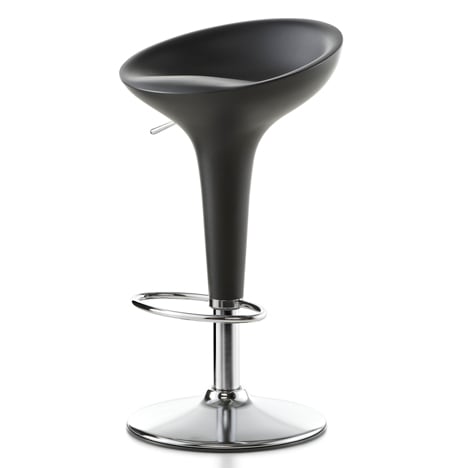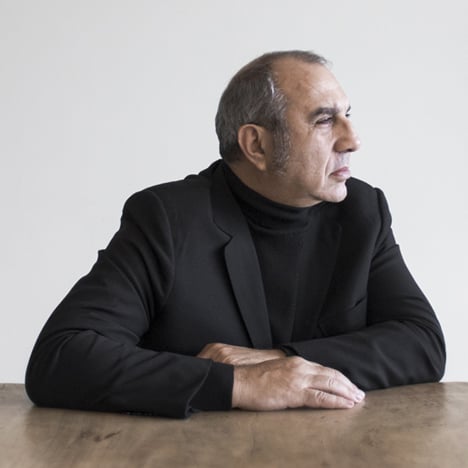
Bombo stool by Stefano Giovannoni is world's "most copied" design product
Design Indaba 2015: the Bombo stool is "the most copied design product in the world," according to its designer Stefano Giovannoni.
"In China there are more than 1,000 companies copying the Bombo stool," the Italian designer told the audience at the Design Indaba conference in Cape Town this afternoon. "It's a big problem."
Giovannoni designed the stool in 1998 for Italian brand Magis and it was an immediate success. Featuring a distinctive swivelling, bulbous, injection-moulded plastic seat mounted on an adjustable column that sits atop a chromed-steel base, the product can be found in bars and cafes around the world.
Milan-based Giovannoni revealed that Magis only asked him to design a stool because they had a supply of pistons – the gas-filled, shock-absorbing devices used in the stools' column – that they had no use for.

"It came about by a very lucky situation because the company had in storage one thousand pistons – the pistons that move up and down," he said. "They asked me not because they had a vision of the product but just to use these pistons that they had in storage."
Giovannoni claimed the product accounted for a signifiant proportion of the brand's sales. "The company, Magis, was really made by the Bombo," he said. "The turnover of Magis was for 10 years made more than 50 per cent by this product."
The designer said that despite years of legal action, the copying of the stool continued. "The copies cost about 30 euros in China, while the original costs 365 euros," he said. "For 10 years the sales have been growing and growing. We tried to develop many legal actions but after some time a volume the size of this theatre full of Bombo has been destroyed in countries like Australia. But there were too many companies copying and it was impossible to stop it."
He had even spotted Bombo copies on his way to give his Design Indaba lecture, he said: "I have seen some copies on the stands outside the door!"
Giovannoni runs his own studio in Milan, but originally trained as an architect and designer at Florence University in the 1970s.
He went on to become one of the founding members of the Italian Bolidismo group of the 1980s – a cluster of designers that combined elements of American Futurism, 1930s architectural styles and comic-book graphics. He also founded the King Kong studio with fellow Italian designer Guido Venturini in the same decade.
He is best known as an industrial designer – largely due to his work for Italian design brand Alessi, including the Girotondo collection of metal household appliances designed with Venturini, the Mami tablewear range and the transparent plastic Family Follows Fiction accessories.
He also created the Il Bagno Alessi bathroom fittings range in 2002, produced by Laufen, and the Panda Alessi Fiat car, which debuted in 2003.
The Design Indaba conference runs until Friday 27 February at the Cape Town International Convention Centre.